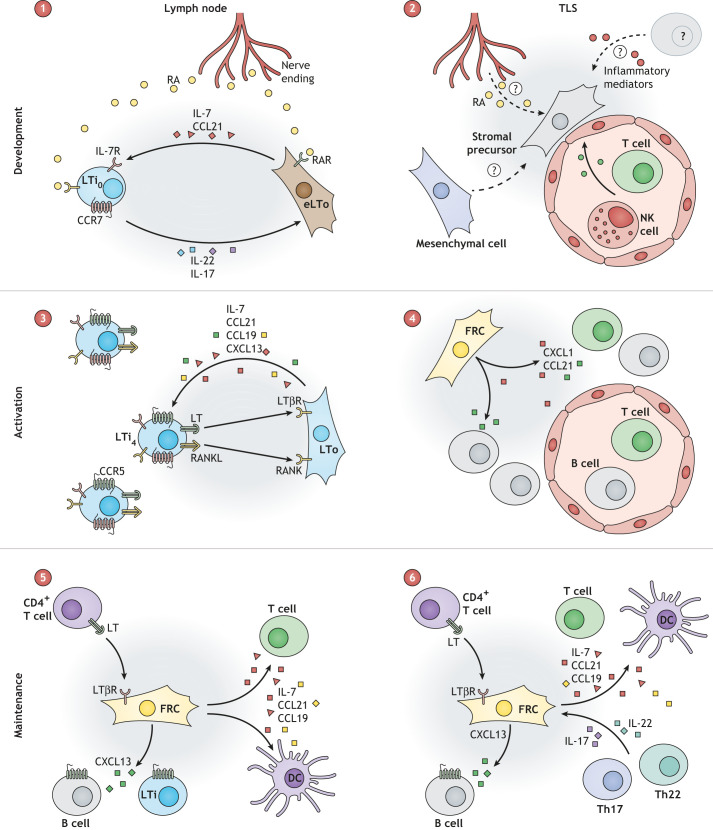Fig. 3.
FRCs drive the formation and maintenance of the niche in lymph nodes and in tertiary lymphoid structures. (1) Lymph node anlagen formation is driven by the retinoic acid (RA) released by nerves binding to the RA receptor (RAR) on the embryonic lymphoid tissue organiser (eLTo) cells. eLTo cells secrete CCL21 and IL-7, leading to the recruitment and survival of LTi precursors (LTi0), which express IL-7 receptor (IL-7R), CCR7 and RAR. LTi0 cells secrete IL-22 and IL-17, inducing eLTo differentiation. (2) Tertiary lymphoid structure (TLS) development is not fully understood, but occurs through a phenotypic change of stromal precursors or pericytes proximal to blood vessels. Multiple factors are involved in TLS formation, including IFN-γ [from activated T and natural killer (NK) cells] or inflammatory mediators such as IFN-α or IL-17, while a contribution of RA from neurons cannot be excluded. (3) LTo cells secrete CXCL13, CCL21, CCL19 and IL-7 to recruit LTi4 cells. RANKL–RANK and lymphotoxin–LTβR binding between LTi4 and LTo cells causes the activation of LTo cells. (4) TLS niche formation is driven by podoplanin+ (PDPN+) FRCs producing CXCL13 and CCL21 to recruit T and B cells. (5,6) FRCs are central for niche maintenance in lymph nodes and TLSs by interacting with leukocytes. How TLS stroma is replenished is unknown; however, the presence of mesenchymal precursors or LTi/ILC3 cells cannot be excluded. Th, T helper.

